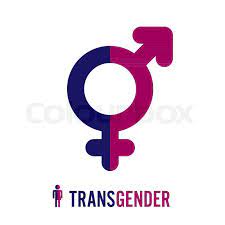Testosterone is often thought of as a male hormone, but it’s important to recognize that it plays a vital role in female health as well. Among the many effects of testosterone in women, one topic that sparks interest is its potential influence on the clitoris. As we delve into the relationship between testosterone and clitoral growth, we will explore various aspects of this fascinating subject, from anatomy to common misconceptions.
What Is Testosterone and How Does It Work?
Testosterone is a steroid hormone that is primarily produced in the ovaries, adrenal glands, and peripheral tissues in women. While it is often associated with men, testosterone plays a crucial role in a woman’s overall health, influencing processes like muscle mass, bone density, and libido. It is a powerful hormone that works by binding to specific receptors in various tissues, triggering a cascade of biological responses that can affect mood, energy levels, and sexual function.Cost Of Hormones For Transgender
In women, testosterone levels fluctuate throughout the menstrual cycle, peaking during ovulation and tapering off afterward. These changes highlight the hormone’s dynamic role in the body, suggesting that it not only contributes to sexual health but also impacts emotional well-being and physical vitality. Understanding testosterone’s functions sets the stage for exploring its impact on the clitoris and overall female anatomy.
Understanding the Clitoris: Anatomy and Function
The clitoris is a highly sensitive organ located at the top of the vulva, often celebrated for its crucial role in female sexual pleasure. Anatomically, it extends beyond the visible portion, featuring internal structures that resemble a wishbone shape. This means the clitoris has extensive nerve endings and is primarily designed for sexual arousal, making it a key player in the sexual response cycle.
Functionally, the clitoris serves as a central component of female sexual pleasure and orgasm. It is rich in erectile tissue, which can expand and engorge with blood during arousal, leading to heightened sensitivity. This anatomical marvel is often overshadowed in discussions about female sexuality, but its importance cannot be overstated—it is a vital part of sexual health and enjoyment.
The Science Behind Clitoral Growth and Hormones
The clitoris can undergo changes in size and sensitivity due to hormonal fluctuations, particularly during puberty, pregnancy, and menopause. Hormones like estrogen and testosterone play significant roles in these changes. Testosterone, in particular, is thought to influence the development and growth of erectile tissue, which may result in an increase in clitoral size or sensitivity under certain conditions.
Research suggests that hormonal imbalances or changes, such as those experienced during menopause, can lead to a reduction in testosterone levels. This decrease may directly affect the clitoris, contributing to issues such as decreased libido or sexual dysfunction. Understanding these hormonal dynamics can shed light on how testosterone impacts clitoral growth and function.
How Testosterone Affects Female Anatomy
Testosterone doesn’t just affect the clitoris; it also has a broader influence on female anatomy. Increased testosterone levels can lead to changes in body composition, such as increased muscle mass and reduced fat distribution. This can, in turn, enhance physical performance and energy levels, creating a ripple effect on overall well-being.
In the context of sexual health, testosterone plays a key role in arousal and lubrication. Women with higher levels of testosterone often report enhanced sexual desire and satisfaction. By affecting both the clitoris and other aspects of female anatomy, testosterone is shown to be an essential player in maintaining sexual health and overall vitality.
Common Myths About Testosterone and Clitoral Growth
One of the most widespread myths surrounding testosterone is that it leads to excessive masculinization in women, including the notion that clitoral growth could be perceived as a negative side effect. In reality, testosterone is a naturally occurring hormone that can enhance sexual health when present in balanced levels.
Another misconception is that clitoral growth is solely tied to pathological conditions or hormone therapy. While it’s true that hormonal treatments can affect clitoral size, natural variations exist among women. The idea that any noticeable change is alarming is misleading; understanding the natural variability and healthy ranges of testosterone levels is crucial for dispelling these myths.
Signs of Clitoral Growth: What to Look For
When exploring the effects of testosterone on the clitoris, it’s essential to know what signs indicate clitoral growth or changes. Physical changes might include increased sensitivity or a noticeable difference in size and shape. Many women report a heightened sense of arousal as well, which can indicate that testosterone is positively influencing their sexual health.
Additionally, changes in libido and sexual satisfaction can also point to shifts in hormonal levels. If someone notices that they are experiencing more intense orgasms or greater sexual desire, these might be signs that their testosterone levels are impacting the clitoris and overall sexual function. Keeping track of these signs can provide valuable insights into one’s hormonal landscape.
Potential Benefits of Increased Testosterone Levels
Elevated testosterone levels can lead to numerous benefits for women, particularly regarding sexual health. Many women report increased libido, improved sexual arousal, and enhanced pleasure during sexual activities when testosterone levels are optimal. These changes can significantly improve overall quality of life and personal relationships.
Beyond sexual health, increased testosterone levels can boost energy, enhance mood, and improve cognitive function. Women may experience a reduction in fatigue and an increase in motivation, leading to a more active lifestyle. Understanding the potential benefits of testosterone can empower women to explore their health options without fear or stigma.
Speaking Up: Talking About Hormones and Health
Despite the importance of hormones like testosterone, many women feel uncomfortable discussing these topics. There is a cultural stigma surrounding female sexual health, which can prevent open conversations about hormones and their impact. Breaking down these barriers is essential for fostering a supportive environment where women can seek information and guidance.
Encouraging open dialogues about hormones can help women understand their bodies better and advocate for their health needs. Healthcare providers should create safe spaces for these discussions, empowering women to explore their hormonal health without embarrassment or fear of judgment. By addressing these topics openly, we can promote better understanding and healthier lives for women everywhere.
In conclusion, the relationship between testosterone and clitoral growth is a multifaceted topic that highlights the importance of hormones in female health. By dispelling myths and encouraging open dialogue, we can empower women to take charge of their sexual well-being. Understanding how testosterone works and its impact on the clitoris not only fosters better health but also helps women embrace their bodies and experience fulfilling lives.


